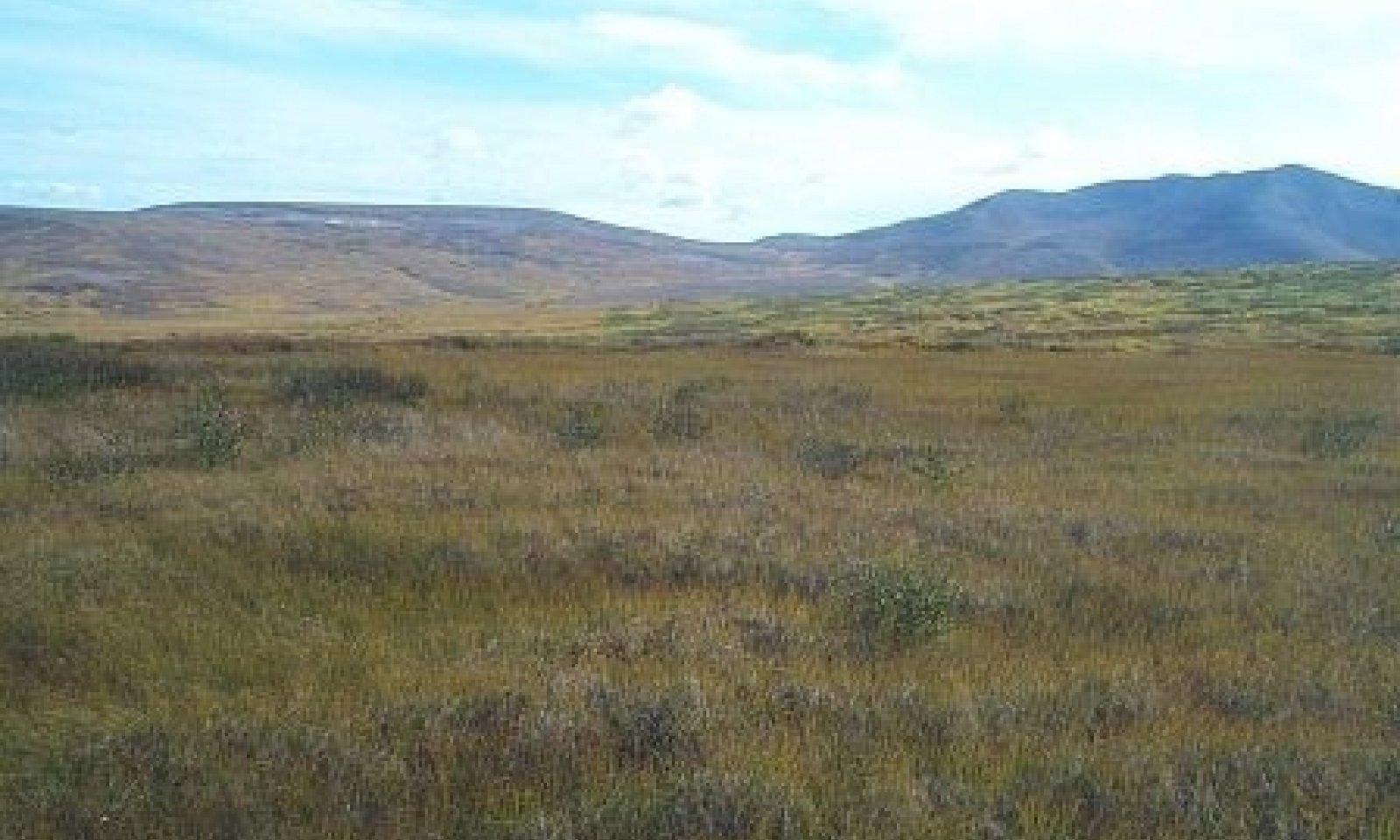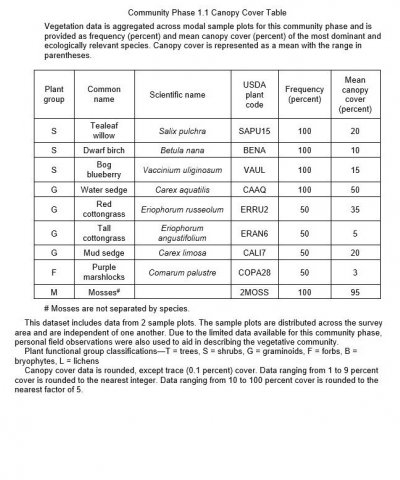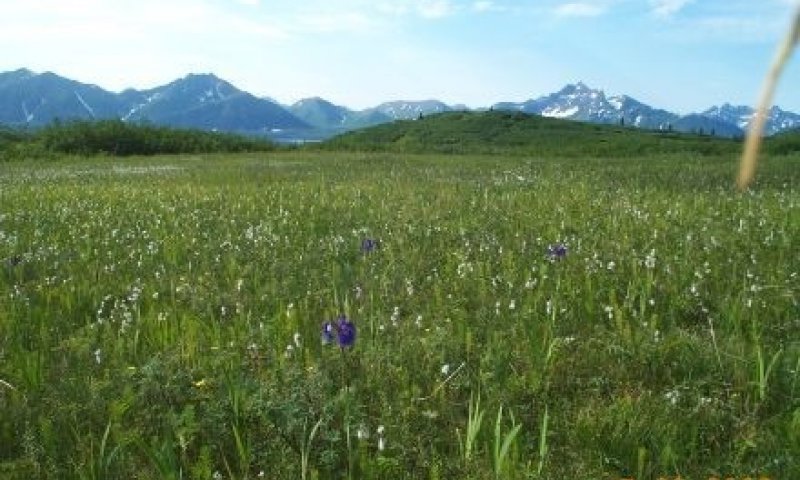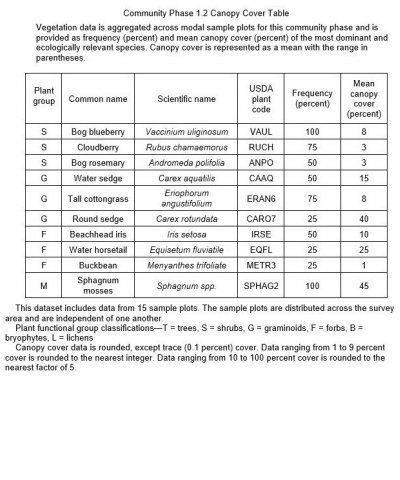

Natural Resources
Conservation Service
Ecological site R236XY103AK
Subarctic Graminoid Loamy Mountain Depressions
Last updated: 2/13/2024
Accessed: 12/22/2025
General information
Provisional. A provisional ecological site description has undergone quality control and quality assurance review. It contains a working state and transition model and enough information to identify the ecological site.
MLRA notes
Major Land Resource Area (MLRA): 236X–Bristol Bay-Northern Alaska Peninsula Lowlands
The Bristol Bay-Northern Alaska Peninsula Lowland Major Land Resource Area (MLRA 236) is located in Western Alaska. This MLRA covers approximately 19,500 square miles and is defined by an expanse of nearly level to rolling lowlands, uplands and low to moderate hills bordered by long, mountain footslopes. Major rivers include the Egegik, Mulchatna, Naknek, Nushagak, and Wood River. MLRA 236 is in the zone of discontinuous permafrost. It is primarily in areas with finer textured soils on terraces, rolling uplands and footslopes. This MLRA was glaciated during the early to middle Pleistocene. Moraine and glaciofluvial deposits cover around sixty percent of the MLRA. Alluvium and coastal deposits make up a large portion of the remaining area (Kautz et al., 2012; USDA, 2006).
Climate patterns across this MLRA shift as one moves away from the coast. A maritime climate is prominent along the coast, while continental weather, commonly associated with Interior Alaska, is more influential inland. Across the MLRA, summers are general short and warm while winters are long and cold. Mean annual precipitation is 13 to 50 inches, with increased precipitation at higher elevations and areas away from the coast. Mean annual temperatures is between 30 and 36 degrees F (USDA, 2006).
The Bristol Bay-Northern Alaska Peninsula MLRA is principally undeveloped wilderness. Federally managed land includes parts of the Katmai and Aniakchak National Parks, and the Alaska Peninsula, Becharof, Togiak and Alaska Maritime National Wildlife Refuges. The MLRA is sparsely populated. Principal communities include Dillingham, Naknek, and King Salmon. Commercial fishing in Bristol Bay and the Bering Sea comprises a major part of economic activity in the MLRA. Other land uses include subsistence activities (fishing, hunting, and gathering) and sport hunting and fishing (USDA, 2006).
Ecological site concept
This ecological site is in mountain depressions. Site elevation is between 280 and 2,950 feet above sea level. Slopes are gentle (4 – 7 percent). Concave slope shape and highly organic, very poorly drained soils with a year-round water table shape the vegetation on this site.
The reference state supports two communities. The reference plant community is characterized as an open scrubland (Viereck et al., 1992). It is composed of facultative to obligate wetland shrub, forb, and graminoid species. Sphagnum mosses are present and greatly influence the vegetation on this site. Low points in depression centers support an emergent graminoid wetland community.
Associated sites
| R236XY106AK |
Subarctic Dwarf Scrub Dry Loamy Slopes R236XY106AK describes upper hill slopes. These areas feature the depressions described by R236XY103AK. |
|---|---|
| R236XY151AK |
Subarctic Open Willow Loamy Plain Swales R236XY151AK describes swales on hills. Swales are distinct microfeatures found on the same hillslopes as the depressions described by R236XY103AK. |
| R236XY105AK |
Subarctic Scrub Mosaic Gravelly Hillslopes R236XY105AK describes hill side slopes. These slopes feature the depressions described by R236XY103AK. |
Similar sites
| R236XY109AK |
Subarctic Low Scrub Peat Drainages Both sites are in depressions on larger features. R236XY109AK is in plains depressions, which are at lower elevations and undergo longer ponding disturbances. Site and soil hydrology is a major factor differentiating the vegetation on these similar sites. |
|---|---|
| R236XY127AK |
Subarctic Sedge Peat Plain Depressions R236XY127AK is in depressions of plains and hills. Differences in soil and site hydrology and characteristics are major factors differentiating the graminoid reference plant community in R236XY127AK and the scrubland described here. |
Table 1. Dominant plant species
| Tree |
Not specified |
|---|---|
| Shrub |
(1) Salix pulchra |
| Herbaceous |
(1) Carex aquatilis |
Click on box and path labels to scroll to the respective text.
Ecosystem states
State 1 submodel, plant communities
| 1.1A | - | Raised water table |
|---|---|---|
| 1.2A | - | Lowered water table |



